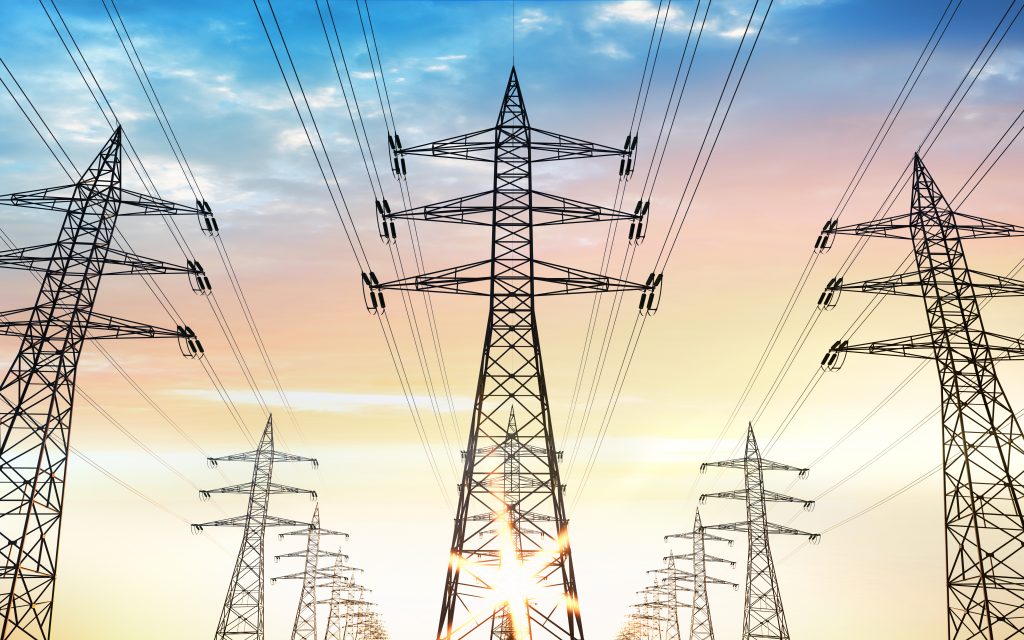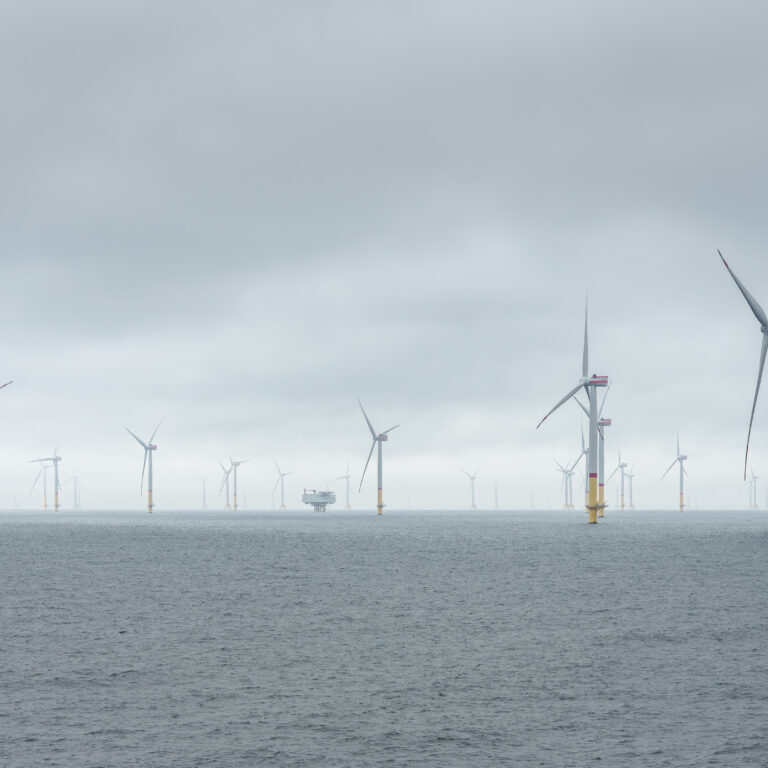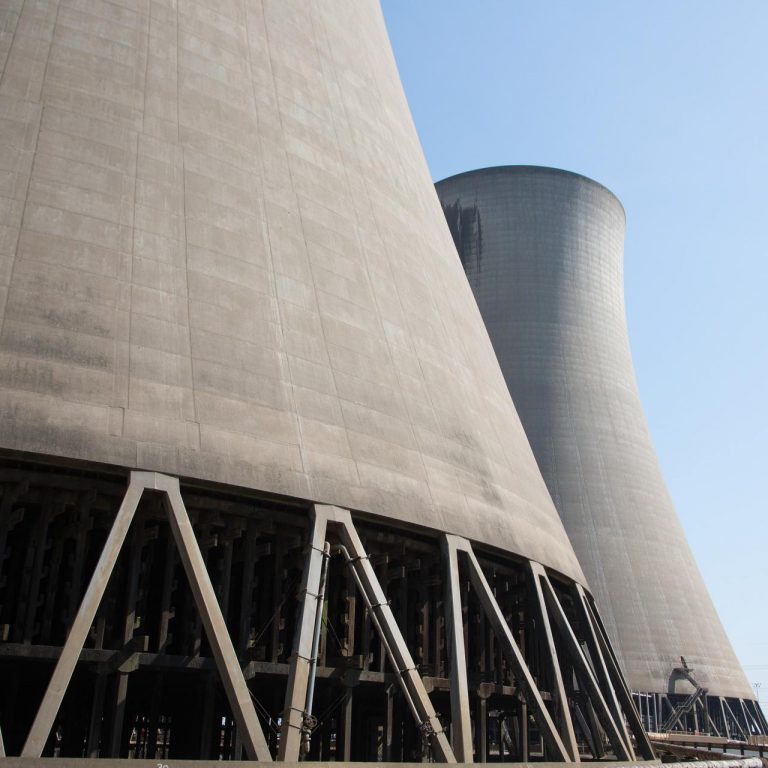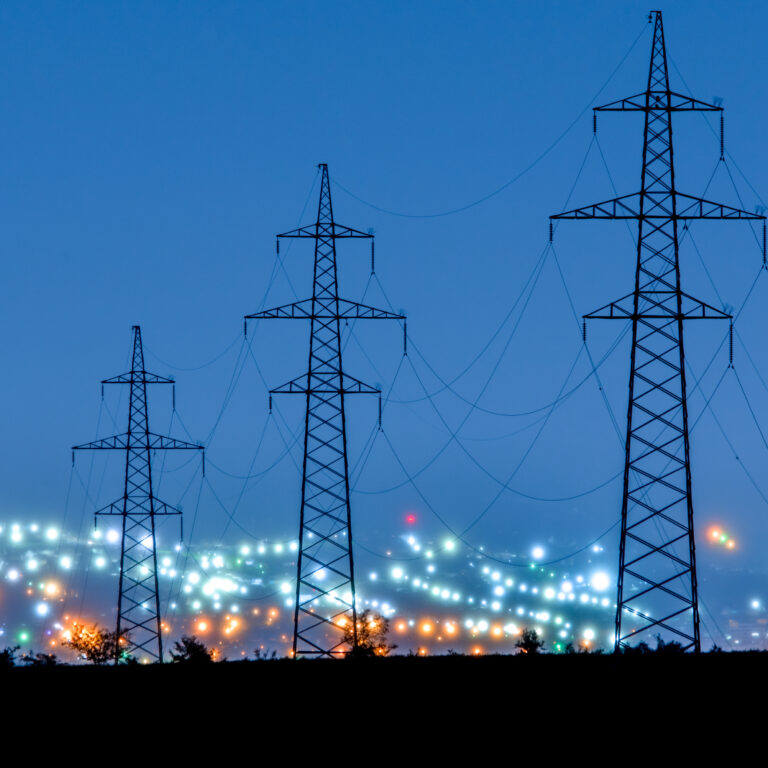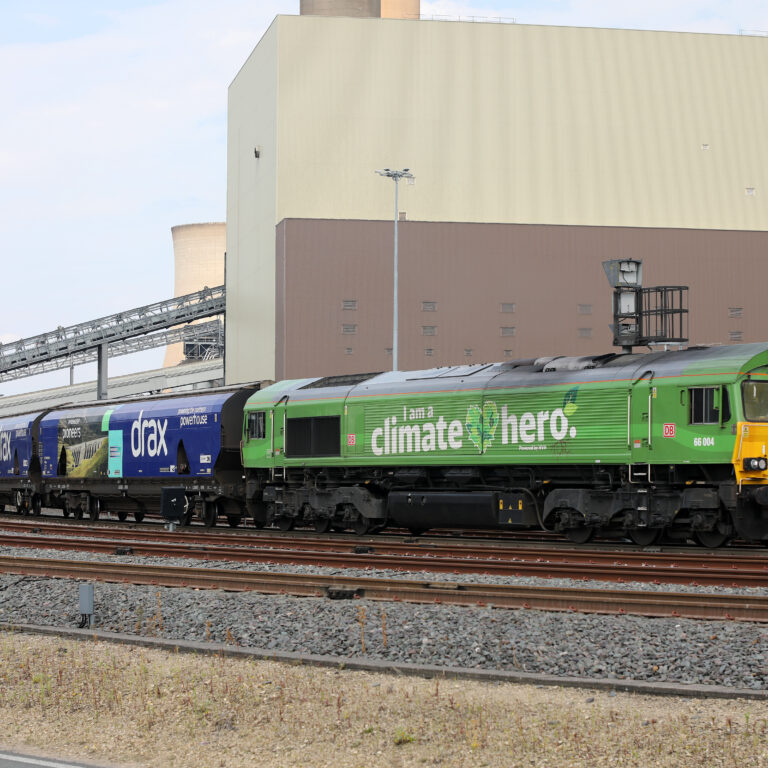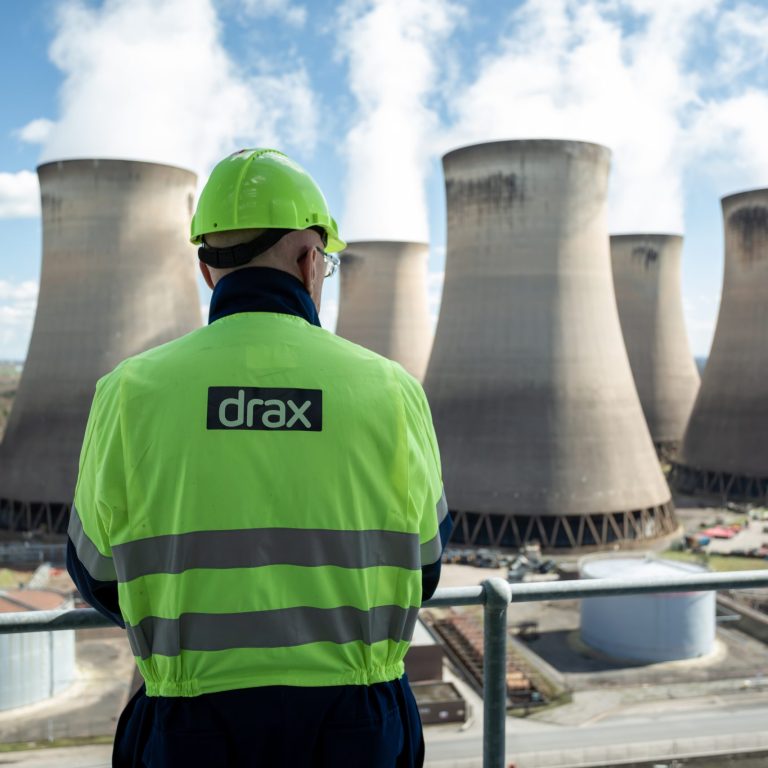- British power stations are producing 100 million tonnes less CO2 per year than they were at the start of the decade
- The amount of carbon being saved is equivalent to removing every single car and van off the UK’s roads or what would be required to fly everyone in the UK to Beijing and back.
On Sunday June 30 carbon emissions from electricity fell to just 97g per kWh, breaking the previous record of 104g per kWh set last summer, and for the first time ever meeting the UK Committee on Climate Change’s 2030 target of 100 g per kWh for a whole day.
June 30 was also the first ever day when more than half of Britain’s electricity was powered by renewables – 39% from wind, 9% from solar, 8% from biomass and 1% from hydro.
The changes seen on the power grid reflect a new record at the UK’s biggest renewable power generator. Drax recorded a 52% reduction in its carbon emissions in the first half of 2019 compared to the same period last year, with 94% of the power produced at Drax Power Station in North Yorkshire being renewable. Drax Power Station is the largest decarbonisation project in Europe.
Imperial College London’s Dr Iain Staffell, who worked independently via Imperial Consultants to analyse Drax’s Electric Insights data, said:
“Britain’s power system is decarbonising at a faster rate than any other country in the world. We have spent more than half the summer without a single coal power station turned on, and renewables are breaking new records all the time.
“As a result our power stations are producing 100 million tonnes less CO2 per year than they were just six years ago. The amount of carbon saved is equivalent to taking every single car and van off the UK’s roads, or what would be produced if every single person in the UK flew to Beijing and back.
“It’s fantastic progress, but we still have a long way to go to meet our net zero carbon targets. To make a real difference to the climate crisis, we must waste no time in using this low-carbon electricity to clean up our transport and buildings.”
Will Gardiner, Drax Group CEO said:
“Drax is playing an important role in the energy transition – our carbon emissions in the first half of the year have halved compared to last year. With our biomass, pumped storage, hydro and gas power stations, we are generating more renewable, low carbon and flexible power to support the system as it continues to decarbonise.
“Having converted another generating unit at Drax Power Station to use biomass instead of coal last year, we’re now producing more renewable power at the times it is needed most – but we we’d like to go further.
“If we can scale up our successful bioenergy with carbon capture and storage, Drax could become the world’s first negative emissions power station in the mid-2020s, helping to achieve the government’s net zero by 2050 carbon target.”
The clean record on June 30 was made possible by it being both a windy and a sunny, summer Sunday – when demand is often lower because less people are at work or school, and longer daylight hours and warmer temperatures means the need for electricity isn’t as high.
The carbon dioxide emissions from the electricity system on June 30 were 72% lower than the most carbon intensive day of the year, which was January 24 (347g per kWh). The difference amounted to 158,000 tonnes of carbon dioxide – equivalent to the CO2 emitted by around 620,000 flights from London to Mallorca.
Data from Drax Electric Insights shows:
- Fossil fuels supplied just 9.5% of electricity in the mid-afternoon on June 30 2019.
- Renewables provided 55.3% of Britain’s electricity throughout the day – the previous record was 49.4% on September 21 2018.
- June 2019 saw the lowest ever monthly demand, at 29.4 GW, beating the previous record of 29.6 GW from August 2017.
ENDS
Media contacts:
Ali Lewis
Drax Group Head of Media & PR
E: [email protected]
T: 07712670888
Jessica Gorton
Drax Group Press Officer
E: [email protected]
T: 07712677177
Joshua Atkins
Director, FTI Consulting
E: [email protected]
T: 07970256355
Editor’s Notes
Read the special Drax Electric Insights report: Britain’s power system has never been closer to being fossil-free
- On the British power system’s most carbon intensive day of 2019 so far (January 24) temperatures fell to below zero for much of the country and demand was at 41.6 GW. 71% of power came from fossil fuels.
- Even the most carbon intensive day this year was only about half the carbon intensity of the highest seen on the grid on February 12, 2012, when it was 627g per kWh.
- The reduction in carbon intensity has been as a result of more renewables displacing coal on the electricity system.
- Quarter 2 2019 saw the share of fossil fuel generation fall to its lowest ever level, dipping below 10% on May 26.
- Drax Group’s carbon emissions reduced 52% from 265g CO2e/kWh in H1 2018 to 128g CO2e/kWh in H1 2019. This follows the conversion of a fourth generating unit to use biomass instead of coal in H2 2018 and a reduction in generation from coal.
- The Intergovernmental Panel on Climate Change (IPCC) says that by 2050 85% of the world’s electricity will come from renewables like wind and solar – with the remaining 15% coming from flexible technologies, like biomass, gas and pumped storage, which are able to deliver the essential support services the grid needs to maintain secure supplies.
- In January Drax Group completed the acquisition of a portfolio of renewable, low-carbon and flexible power stations, in strategic locations across the country – from Scotland to the South East coast.
- Drax Power Station in North Yorkshire is the UK’s largest power station and the country’s biggest renewable electricity generator.
- Since converting two thirds of the power station to use sustainable biomass instead of coal, it is producing enough renewable electricity for four million households and delivering carbon savings of more than 80%.
- If Drax is able to scale up its successful bioenergy with Carbon Capture and Storage (BECCS) pilot project to become the world’s first negative emissions power station, it would be reducing the carbon dioxide in the atmosphere at the same time as producing flexible, renewable power which supports grid stability.
- According to the UK’s Committee on Climate Change – the use of BECCS and achieving negative emissions will be crucial to achieving net zero carbon emissions by 2050.
- The UK Committee on Climate Change and National Grid in its Future Energy Scenarios report both concluded that if we are to achieve net zero carbon emissions by 2050, the electrification of heat and transport will lead to increased demand for power.
- Drax has announced a partnership with National Grid Ventures and Equinor to explore the potential in the Humber region for developing the UK’s first net zero industrial cluster, using CCS and hydrogen.
About Electric Insights
- Electric Insights is commissioned by Drax and is delivered independently by a team of academics from Imperial College London, facilitated by the College’s consultancy company – Imperial Consultants. The quarterly reports analyse raw data made publicly available by National Grid and Elexon, which run the electricity and balancing market respectively, and Sheffield Solar.
- Electric Insights Quarterly focuses on supply and demand, prices, emissions, the performance of the various generation technologies and the network that connects them. The next edition featuring Q2 2019 data is due to be published in August.
- Along with Dr Iain Staffell, the team from Imperial includes Professors Richard Green and Tim Green, experts in energy economics and electrical engineering, and Dr Rob Gross who contributes expertise in energy policy.
- The quarterly reports are backed by an interactive website electricinsights.co.uk which provides live data from 2009 until the present.
About Drax
Drax Group’s ambition is to enable a zero carbon, lower cost energy future. Its 2,600-strong employees operate across three principal areas of activity – electricity generation, electricity sales to business customers and compressed wood pellet production.
Power generation:
Drax owns and operates a portfolio of flexible, low carbon and renewable electricity generation assets across Britain. The assets include the UK’s largest power station, based at Selby, North Yorkshire, which supplies five percent of the country’s electricity needs.
Having converted two thirds of Drax Power Station to use sustainable biomass instead of coal it has become the UK’s biggest renewable power generator and the largest decarbonisation project in Europe.
Its pumped storage, hydro and energy from waste assets in Scotland include Cruachan Power Station – a flexible pumped storage facility within the hollowed-out mountain Ben Cruachan. It also owns and operates four gas power stations in England.
B2B supply:
Drax owns two B2B energy supply businesses:
- Haven Power, based in Ipswich, supplies electricity and energy services to large Industrial and Commercial sector businesses.
- Opus Energy, based in Oxford, Northampton and Cardiff, provides electricity, energy services and gas to small and medium sized (SME) businesses.
Pellet production:
Drax owns and operates three pellet mills in the US South which manufacture compressed wood pellets (biomass) produced from sustainably managed working forests. These pellet mills supply around 20% of the biomass used by Drax Power Station in North Yorkshire to generate flexible, renewable power for the UK’s homes and businesses.
For more information visit www.drax.com/uk







